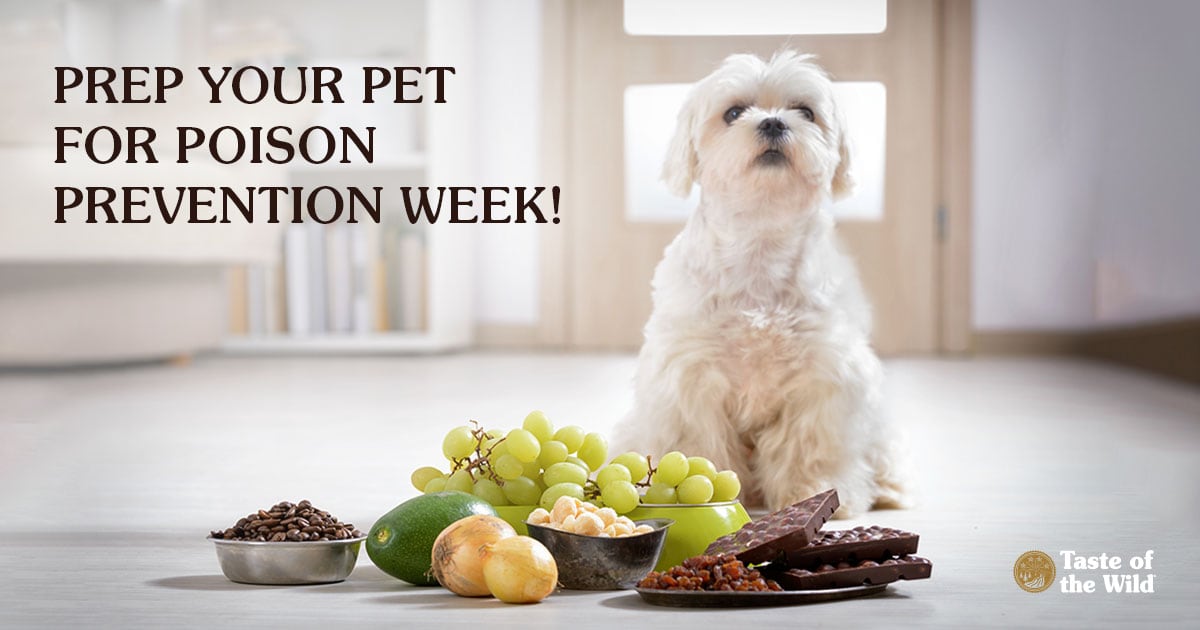
Pets have a way of getting into things they shouldn’t. The chocolate bar that fell between the sofa cushions. The bottle of aspirin you left on the kitchen table. Or that slug bait on the garage floor. Since next week is Poison Prevention Week, we thought everyone could use a few safety tips on how to poison-proof your house.
Here are some of the top toxins that pets can typically find around the house:
- Houseplants — While households with cats should avoid many types of lilies, other plants, such as sago palms and dieffenbachia, can be problematic for pets, too. But don’t worry if you’re really into houseplants. There are plenty that are generally safe for pets. These include spider plants, Boston ferns, African violets, Christmas cacti, Swedish ivy, lipstick plants, moth orchids and some succulents such as Haworthia, Peperomia and burro’s tail.
- Human over-the-counter medications — Drug toxicity is a top claim at Nationwide Pet Insurance because people intentionally give their pets medications intended for humans. Just because some over-the-counter drugs like pain relievers, cold medications and herbal supplements don’t need a prescription doesn’t mean they’re OK for pets. Play it safe: Never give your dog or cat a human medication unless you have been directed to do so by your veterinarian.
- Human and pet prescription medications — Think you have trouble getting into those child-proof bottles? Some pets can make quick work of them, getting into potentially dangerous drugs like ADHD medications, antidepressants, and heart medications. Some prescription medications for pets often contain meat flavoring, which may entice pets to down a month’s worth of doses at once.
- People food — You’re probably well aware that some foods, such as grapes, chocolate and onions, can be dangerous for pets. But never forget that a determined pet can knock over the garbage and swallow chicken bones, coffee grounds, wrappers, moldy food and items that may be toxic, lead to pancreatitis, or require emergency surgery to remove them.
- All things that require batteries — Most dog owners have probably had to replace a TV remote or two. But leaving any battery-operated devices, such as toys and smartphones, lying around can lead to a trip to the emergency clinic with your pet. And power cords, while not toxic, can lead to electric shock or worse if your pet chews on them. Keep all these items out of your pet’s reach.
- Medical or recreational marijuana — Today’s marijuana often contains significantly more THC than in years past. Dogs and cats can become poisoned by exposure to marijuana smoke as well as eating pot plants or cookies, brownies or candies made with this ingredient.
That’s just a short list of what your dog or cat might find in your house. Want more details? Here’s a room-by-room checklist of possible pet toxins.
Of course, if you suspect that your pet may have gotten into a toxin, call your veterinarian or the Pet Poison Helpline at (855) 764-7661 immediately.
The information in this blog has been developed with our veterinarian and is designed to help educate pet parents. If you have questions or concerns about your pet's health or nutrition, please talk with your veterinarian.
